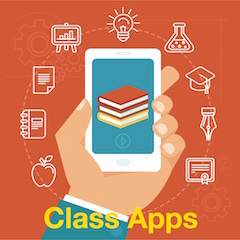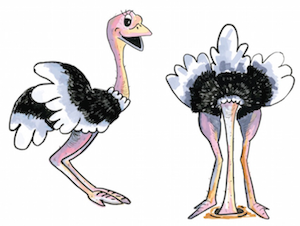How We Can Fix Faulty Background Knowledge
A MiddleWeb Blog
 Getting it Wrong
Getting it Wrong
I am notorious in my family for singing the wrong words to songs. I have four boys who love to have music playing in the house, featuring catchy tunes and lyrics I don’t quite understand.
I never let that stop me from singing along, though. When I can’t tell what people are saying, I simply ‘fill-in-the-blank,’ or invent words and phrases that seem to make sense.
This drives my kids crazy. They are constantly trying to get me to stop singing their music. When that doesn’t work, they switch tactics and try to teach me what the correct lyrics should be. Rarely, however, does any of this fix what I end up singing. It seems that once I learn a song incorrectly it’s nearly impossible for me to get it right.
Misunderstandings and Misconceptions
![]() When it comes to learning in the classroom, all that needs to happen (in theory) is for a teacher to ‘stir the pot,’ or create an interaction between what a student already knows and the new knowledge and skills being taught (Koporan, 2010).
When it comes to learning in the classroom, all that needs to happen (in theory) is for a teacher to ‘stir the pot,’ or create an interaction between what a student already knows and the new knowledge and skills being taught (Koporan, 2010).
Of course, the real problem is that students’ background knowledge is often littered with errors and misconceptions. It makes little sense, therefore, to ‘stir the pot’ when some wrong ingredients are floating in the soup.
In schools, young people are expected to develop understanding of how water is recycled in nature; the difference between points, lines, and planes; how colonization affected Native Americans; how to recognize genres in writing, and many other concepts.
Students don’t enter school knowing these things, and – just as important – they usually come to class with many ideas that are inconsistent with what we want them to learn. (I am still trying to help my youngest son understand that ostriches do not bury their heads in the sand, despite what his friend told him on the playground.)
The teacher’s role, then, is to facilitate conceptual change — to help students identify and adjust or correct initial understandings and misunderstandings that they have (Taber, 2011).
Helping Students Get it Right
Below is a list of research-supported recommendations for teachers as we attempt to filter out a flood tide of misunderstandings and misconceptions that follow students into the the classroom:
- Recognize the impact that old learning has on new learning.
- Work to determine students’ prior knowledge and identify incomplete and/or inaccurate understanding of concepts.
- Provide safe opportunities for students to become aware of their own misunderstandings.
- Encourage a classroom climate that focuses on developing new understanding and respectful discussion.
 Address students’ misconceptions at the same time you teach new concepts.
Address students’ misconceptions at the same time you teach new concepts.- Remember that traditional instruction is not effective when trying to address/correct misunderstandings.
- Foster dialogue/discussion about the assumptions and influences that underlie particular misconceptions.
- Recall that more complex concepts need to be broken down into smaller components in order to be better understood.
- Design a variety of student-centered activities that allow learners to resolve conflicts between their existing ideas and more correct information.
- For conceptual change to take place, learners must (a) recognize that they misunderstand something, (b) want to develop a correct understanding, and (c) engage with correct information that they understand and consider useful.
- Help student make connections between concepts learned in the class and everyday life.
- Ask students to develop/explain concept maps.
Technology That Fosters Understanding
With the recommendations above in mind, there are a variety of tools to help teachers identify misunderstandings and facilitate conceptual change in the classroom:
► On the front end of a lesson, teachers can use a survey tools such as Google Forms, SurveyMonkey, Poll Everywhere, and Kahoot! to assess students’ background knowledge and identify potential misconceptions. These tools make it easy to collect data from students on questions that range from multiple choice, open-ended, matching, ranking, and much, much more. The same tools can also be used on the back end of the lesson to ask students to identify and explain which misconceptions might have changed and why.
► I came across a really useful and unique tool called Post-it App. Students and teachers can use old-fashioned Post-it notes to organize their ideas and then use the app to capture, digitize, and reorganize up to 50 notes at a time for discussion and sharing.
► To foster and track student discussion, teachers can pay $1.99 and download Equity Maps. This iPad app provides data and graphs on individual student participation in and contribution to discussions to see if someone with a solid understanding is a little too quiet, if someone is having a hard time keeping quiet, and if the teacher is doing too much talking. There’s also a new interactive premium version to explore.
► Miro (formerly Real-time Board for Educators) provides an interactive, collaborative tool for students and teachers to work together to represent information, concepts, and connections visually. With Stickies Capture you can snap a photo of your whiteboard and instantly convert it into editable digital sticky notes in Miro.
► Free, online, concept-mapping tools such as Coggle, MindMeister, and Popplet can be used by students to create and explain individual concepts and/or the relationship between concepts.
Patience, Patience
As human beings, we are constantly trying to make sense of the world around us. Inevitably, we will get it wrong some – if not most – of the time.
In the case of my singing, sometimes our brains just fill in the blanks. Other times, we rely on individuals around us who unknowingly perpetuate myths and misinformation. (How many who read this post still believed the ostrich story?)
What we think we know will always contain misconceptions. Whether our students are struggling with inaccurate information or suffering from incomplete understanding, as teachers it is up to us to exercise patience and persistence as we guide them through the necessary steps of conceptual change.
References
Koparan, T., Yıldız, C., Köğce, D., & Güven, B. (2010). The effect of conceptual change approach on 9th grade students’ achievement. Procedia-Social and Behavioral Sciences, 2(2), 3926-3931.
Taber, K. S. (2011). Stella Vosniadou (Ed): International Handbook of Research on Conceptual Change.
Tippett, C. D. (2010). Refutation text in science education: A review of two decades of research. International journal of science and mathematics education, 8(6), 951-970.

































